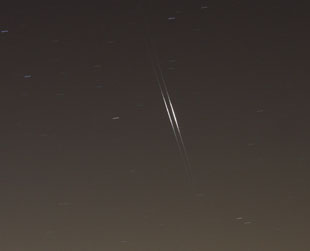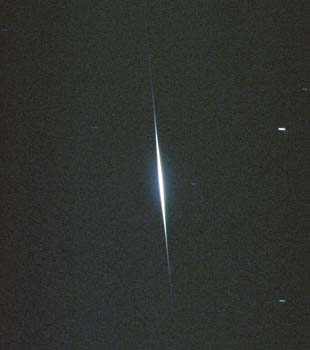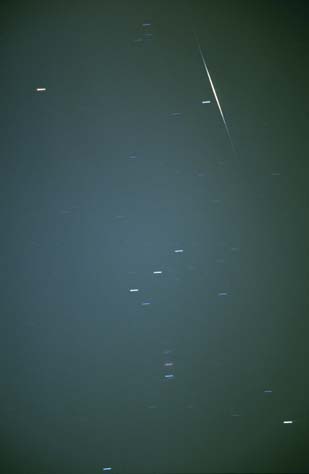(yy/mm/dd)
(min/sec)

click on image for full scale crop
-
17:56:42
+
Canon 24-85 mm 3.5 - 4.5
@ 24 mm f/5.6
AWB
Double Iridium flare
two Iridium flares occured within 1 minute of each other at nearly the same position
processing with Photoshop:
color corection
clipping
scaling

(middle of exposure)
+
Sigma APO
170-500 mm
5.0 - 6.3
@ 170 mm
f/11
Iridium 42 flare
-8 mag
pre image calculations done with Satellite Visibility Homepage of DLR/GSOC and Guide 7
image made in dark twilight
brigth star at upper right is Pollux
slide scanned with Nikon Coolscan at 800 dpi
processing with Photoshop:
color corection
clipping
scaling
save as JPEG

99/01/29
18:35:03
(middle of exposure)
90 sec
Canon EOS 50 E
+
Canon EF
24-85 mm
1:3.5 - 4.5
@ 85mm
f/4.5
Fuji Sensia II 100
Iridium 6 flare in Orion
-8 mag
pre image calculations done with Satellite Visibility Homepage of DLR/GSOC
and Guide 7
slide scanned with Nikon Coolscan at 800 dpi
processing with Photoshop:
color corection
clipping
scaling
save as JPEG